This article previously appeared on Crossfader
Director: Lee Unkrich
Genre: Family, Animation
Year: 2017
The dead have never felt more alive. In Pixar’s latest installment, COCO, a young boy is thrown into the fabled Land of the Dead and embarks on a whimsical journey of self-discovery while learning the importance of family and heritage. Set against the backdrop of the Latin American holiday of “Dia de Muertos” (“Day of the Dead”), COCO provides a much-needed touch of diversity to Pixar’s catalogue while maintaining a sense of subtlety. The film’s central theme of independence versus commitment to familial bonds is truly universal, making it a film audiences of all cultural backgrounds can draw wisdom from. Apart from a carefully developed and flawlessly executed storyline that takes viewers through the full spectrum of emotions, the film’s animation is innovative and breathtaking. Featuring a fully Hispanic cast, including Chicano acting legend Edward James Olmos, COCO dazzles as a tale of perseverance amidst countless internal and external obstacles. COCO is the perfect family film for the Thanksgiving season and beyond, highlighting the value of family with a complementary tenderness and exuberance that it seems only Pixar has truly mastered.
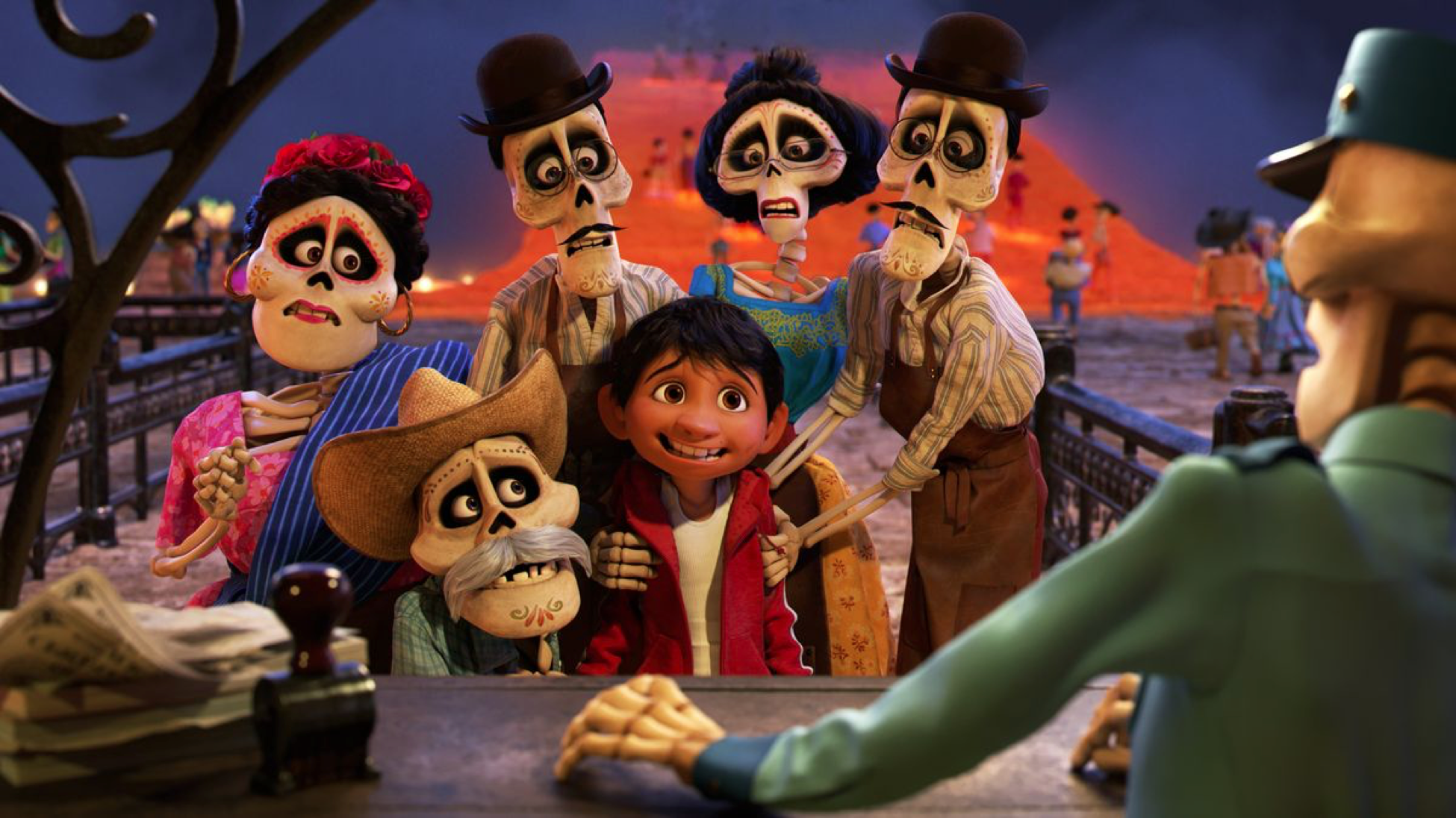
[Insert unwarranted callback and comparison to 2014’s THE BOOK OF LIFE]
COCO follows the journey of Miguel Rivera, our young hero who is desperate to become a famed musician like his childhood idol, Ernesto de la Cruz. There’s only one problem: the Rivera household, hierarchically structured as a traditional Mexican matriarchy, has a very strict ban placed on music of any form, dating all the way back to Miguel’s great-great grandparents. Forced to pursue his passion in secrecy, Miguel battles between his obligations to his family and his desire to break apart from the crowd and stand out. The events of the story take place during the Mexican holiday of “Dia de Muertos,” a time of remembrance of family members who have died and gone off into the next life. As the story progresses and Miguel’s affinity for music is discovered by his family, a confrontation erupts into a rejection of the family identity. Miguel runs away from home and along the way stumbles into another world—The World of the Dead. Desperate to return to his family in the Land of the Living, Miguel must employ the help of his departed ancestors to get him home before it is too late and he becomes eternally trapped in the afterlife.
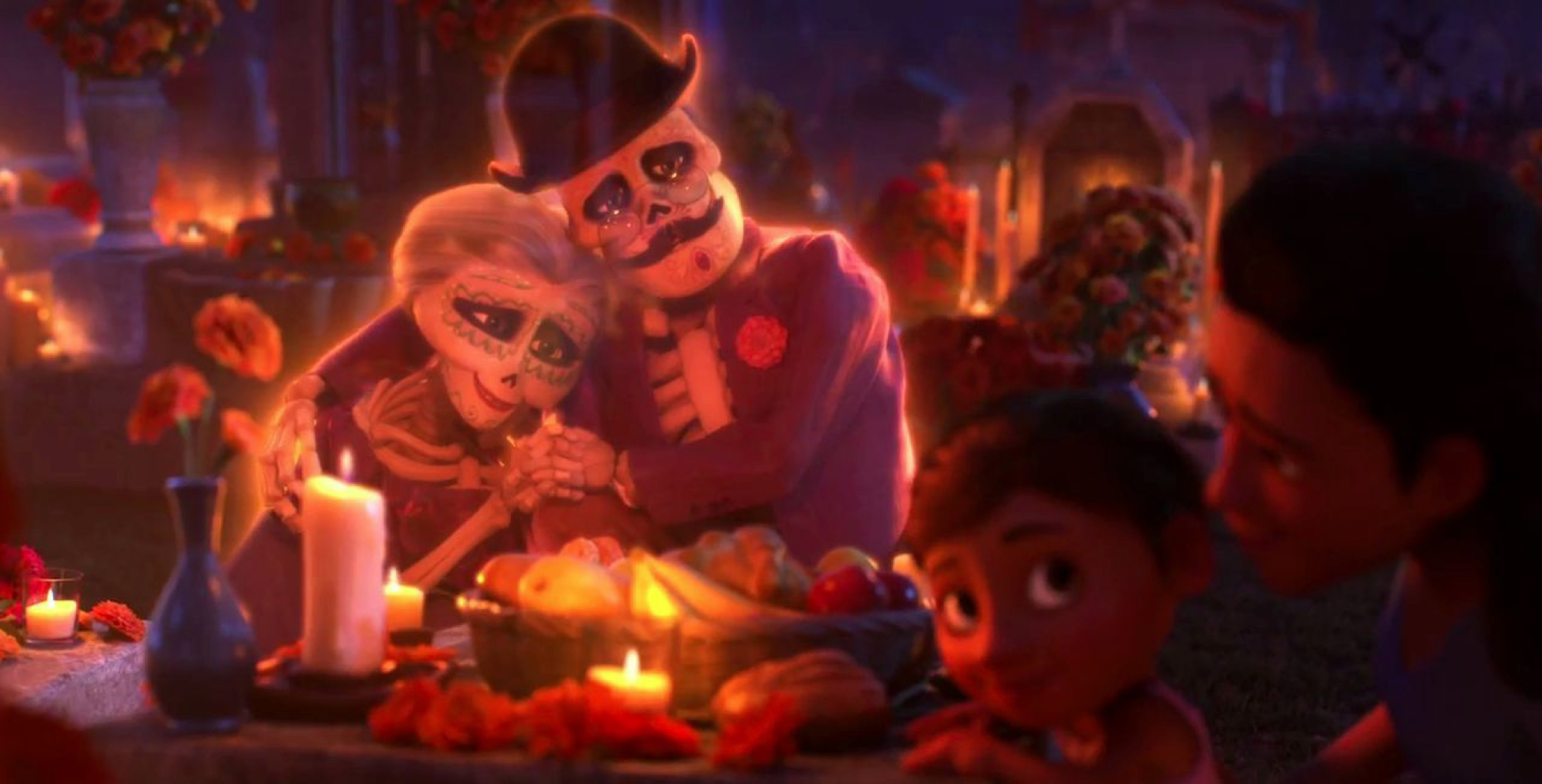
COCO: sponsored by Kleenex tissues and waterproof mascara
While the film is catered and marketed to children, there are some surprisingly adult topics that COCO touches on, always demonstrating an assured ease that keeps it from becoming too blunt or forlorn. The film itself is centered on a holiday that deals entirely with the concept of death and passage into the next life. During “Dia de Muertos,” families gather to commemorate family members who have passed on, offering their support during their spiritual journey. What COCO does very well is make the clear distinction that this holiday is not a time of sorrow and mourning, but rather a time of celebrating and honoring the memory of the dearly departed. In the Land of the Dead, there exists the concept of the “Final Death,” when one’s spirit fades from the afterlife. This Final Death comes when there is no person left in the Land of the Living to tell your story so that you may be remembered by others. While it may seem a very existential topic to touch on for a children’s film, this concept of preserving the stories of the dead calls us to action, making it clear that while a person we love may physically die, their spirit can live with us eternally as long as we share their story with those around us—a celebration, not a mourning.
Another, more mature element of the film I found incredibly, and perhaps unintentionally, thought-provoking was the setup of the border between the Land of the Living and the Land of the Dead. The rules set up in the world of COCO state that passage between the worlds is permitted only by the verification of portrait placement on the family ofrenda (altar). There is a scene in which an inhabitant of the Land of the Dead makes a desperate escape across the border, barely managing to make it to the entrance before he is met by officers simulating border police. It was a relatively small scene, but given the current political climate and the issue of illegal border crossing impacting various members of the Latino community, it seemed to speak volumes about the current state of dehumanization that takes place along the U.S.-Mexico Border.
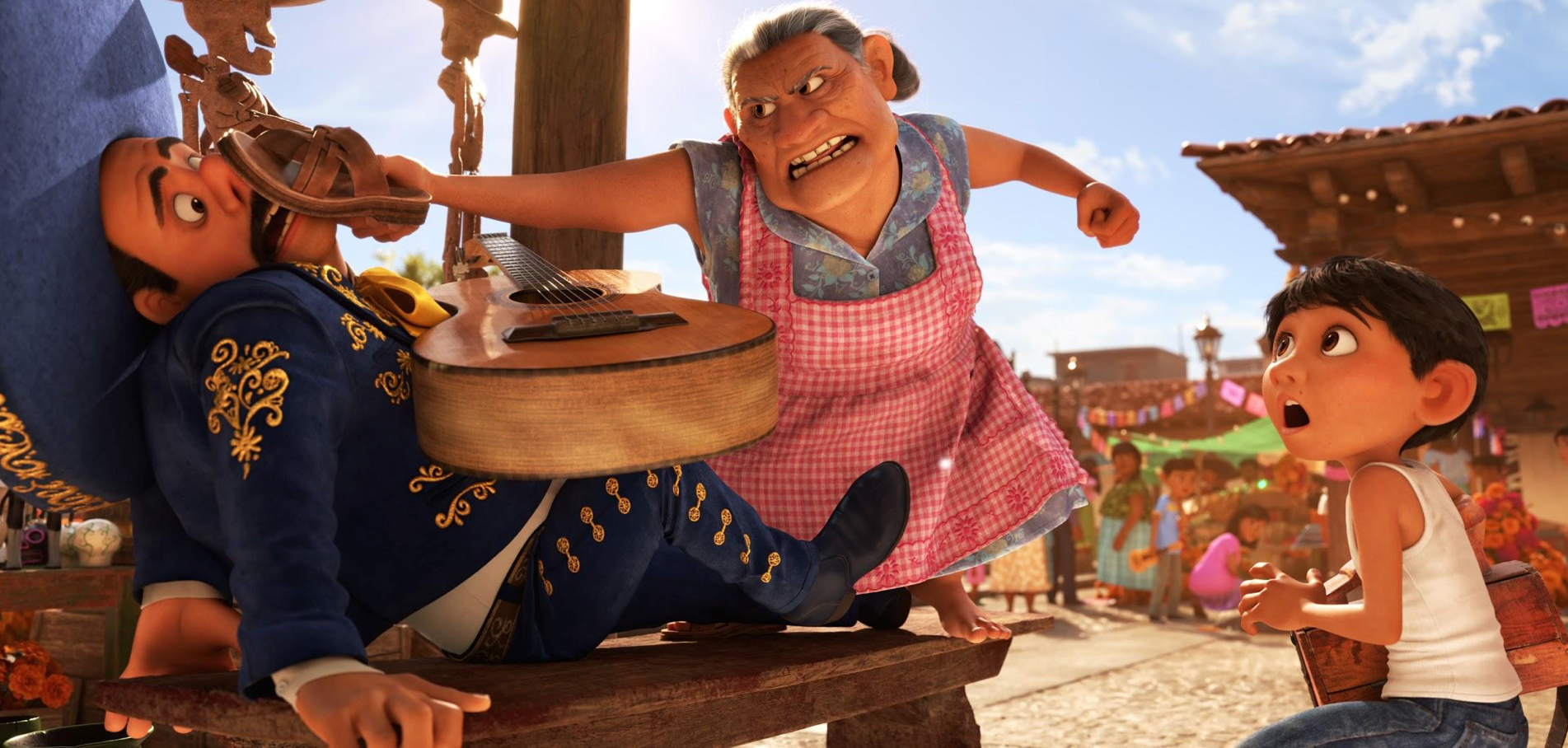
Fear the “Chancla!”
As universally enjoyable and worthy of consideration as it may be, it’s no secret that COCO is intimately tied to the Latino community, and the larger context in which it exists is no less trailblazing than the film itself. The film is directed by Lee Unkrich and written by Adrian Molina, a Mexican screenwriter and animator at Pixar Studios. The film marks Molina’s first fully-developed script for Pixar, and during the course of production, he was even promoted to co-director. The road to COCO’s release was a bumpy one for Unkrich and his team. It all started with Pixar’s unfortunate attempt to trademark “Dia De Los Muertos,” which was met with serious, and understandable, opposition by members of the Latino community. Activists, celebrities, and common audiences alike saw the misstep as an attack on “la cultura,” the Latin culture, and the project, which was intended to celebrate the vibrancy of the Latino culture, shifted to a disguised form of gentrification.
Trademarking a venerated national holiday had Pixar digging a pretty big hole for itself, and the response to their ignorant blunder was the hiring of a cultural consultant group to ensure the film remained true to the values and integrity of the Latino culture. The inclusion of this consultant group did not mark the end of Pixar’s attempts to seek cultural authenticity—the same activists who spoke out against the trademark fiasco were extended an invitation by Pixar to serve as test audiences for early screenings of the film, and their input was woven into COCO’s very fabric. The filmmakers also made several trips to various Mexican cities and villages to record the stories of local families and participate in the ritual customs of the holiday. The inclusion of an external consultant group marked a first for Pixar, which normally operates as a private fortress of innovation, and pays off with small touches of culturally relevant customs and props that make the film more relatable to audiences within the Latino community.
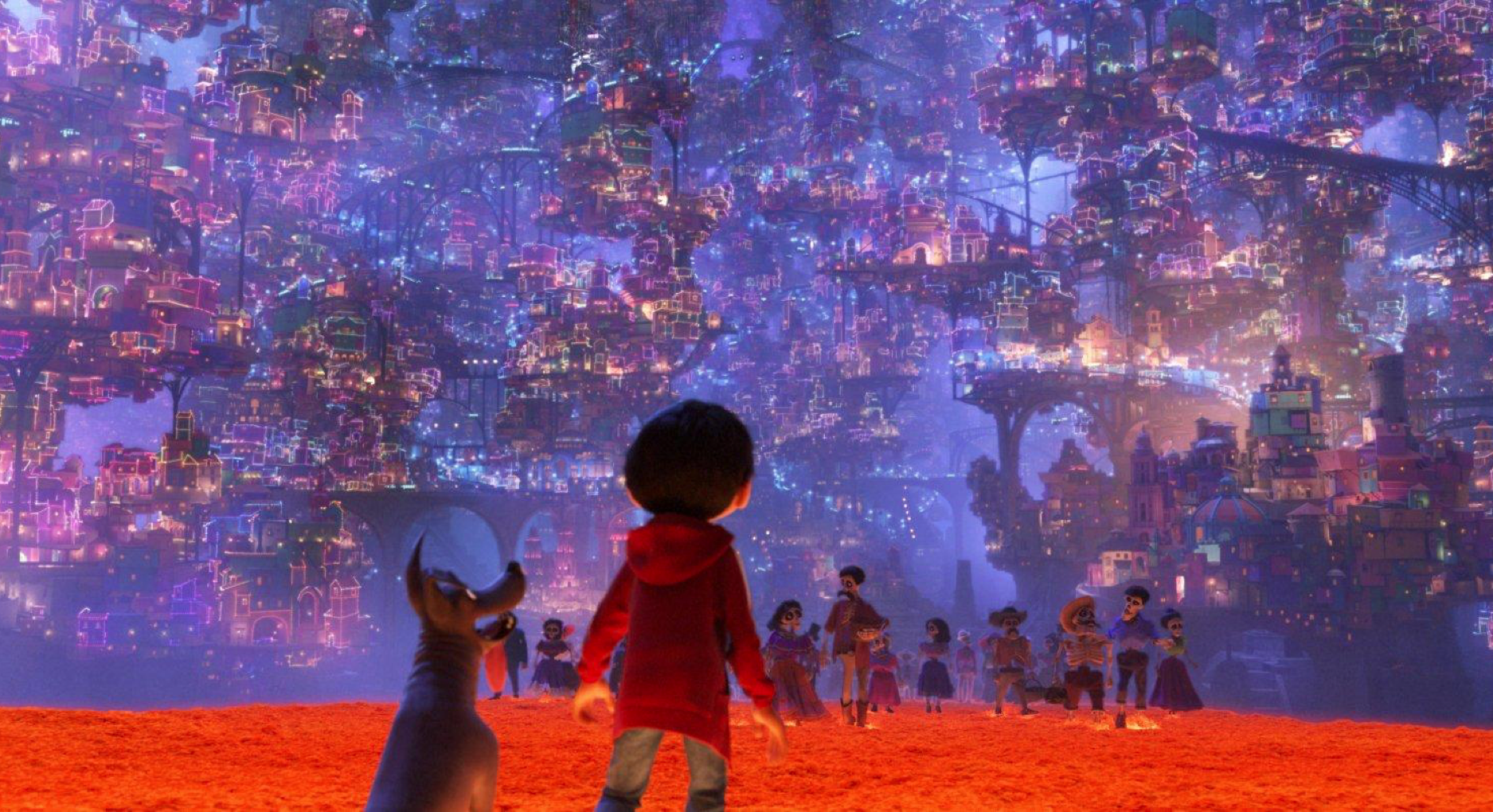
Holy Pixar. ¡Ay Dios Mio!
As for the animation, as per standard Pixar fashion, COCO’s animation, modeling, and texturing is fantastic. The fluid and buttery-smooth movements of the skeletons that populate the Land of the Dead is mesmerizing to watch, firm and living proof that the animators spent countless hours of testing and planning to get the movements and character structures up to par. The lighting once the protagonist Miguel eventually crosses into the Land of the Dead is absolutely breathtaking, with bright, oversaturated colors that leave what would otherwise be a dreary and macabre city looking eye-popping and vibrant. A gorgeous film, it’s undeniable that Pixar’s recent features such as CARS 3 and FINDING DORY are visually immaculate, but when allowed to really experiment in fantasy, the animation is truly pushed to the limit both conceptually and artistically.
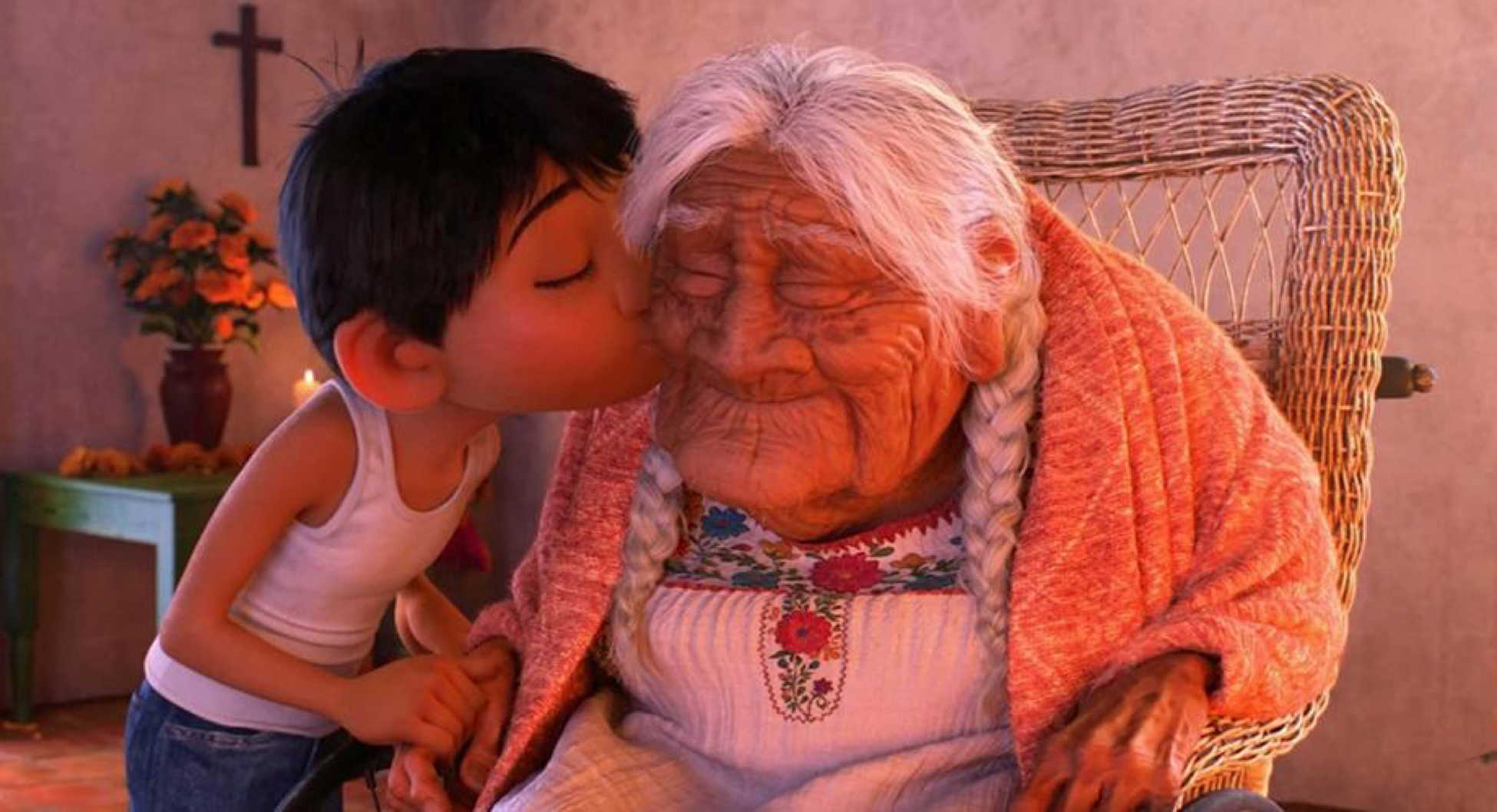
A Mama CoCo teddy bear is at the top of my Christmas list! Her little wrinkly face OMG I could cry right now.
My advice to any audience member of COCO is simple: get ready. There are endless laughs, but it’s a Pixar film, so don’t be naive and think you won’t find yourself ugly-crying at one point during the nearly two-hour film. While it is an adventure epic that sweeps audiences to a land of curiosity with its dynamic and vivacious visuals, COCO’s also a film with a lot of heart, and it’s important that you don’t lose sight of the central message of the impact of family in our lives. A dignified celebration of the Latino culture, the film manages to indirectly and effectively educate audiences on the cultural importance of this widely practiced holiday, while incorporating elements of the art and folklore of “Dia de Muertos.” The seamless incorporation of traditional Mexican music throughout the film only adds to the cultural authenticity of the film and moves audiences to a deeper understanding of the musically rhythmic heartbeat of every Latino. Following Miguel along his journey, we are all encouraged to look within ourselves and find the happy balance between aspiring to achieve our dreams and living in the present with those we surround ourselves with. So contribute to the celebration of diversity in filmmaking this holiday season and take the family to experience the wildly fun, tear-jerking adventure that is Pixar’s COCO.
Verdict: Recommend
















Comments